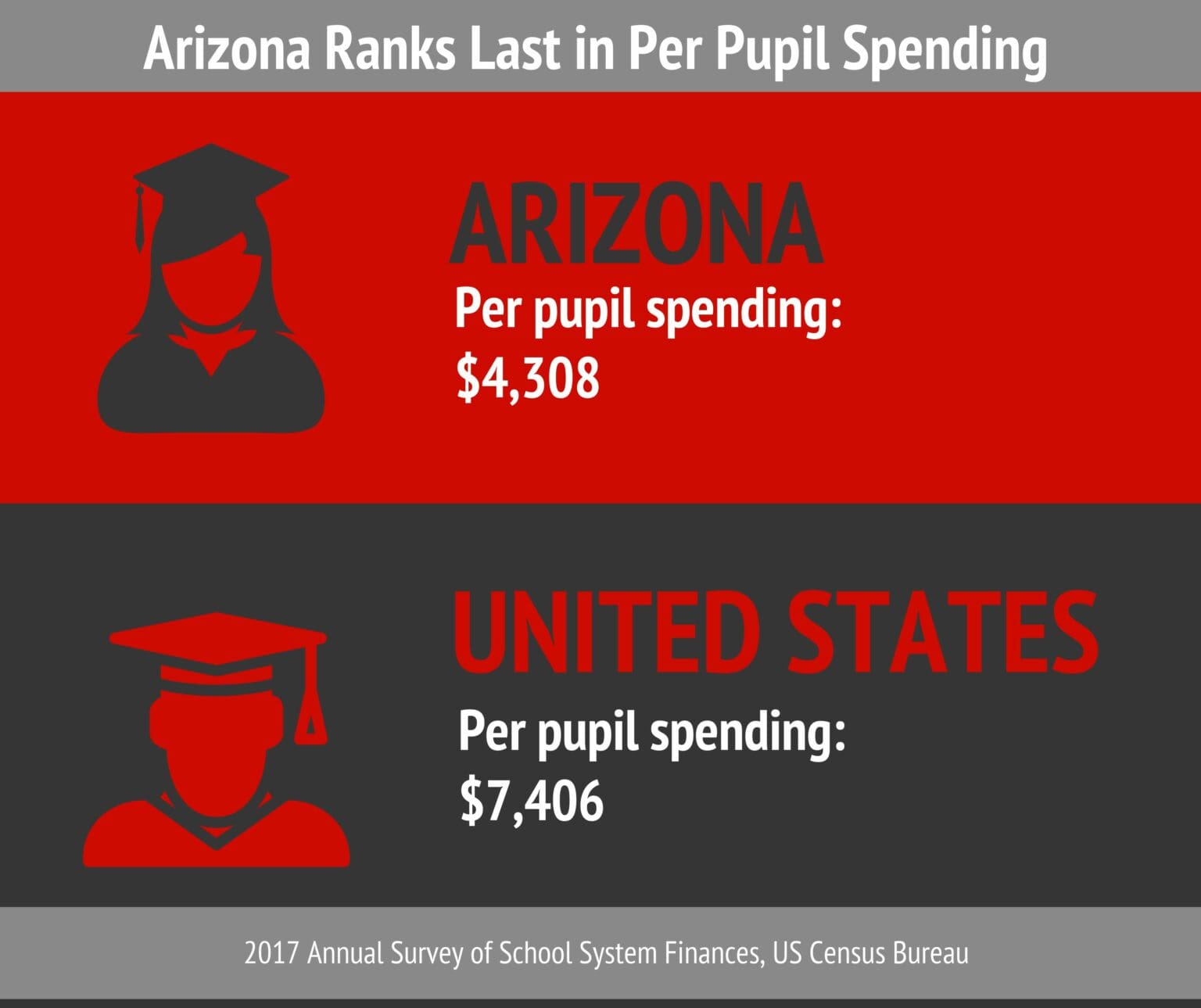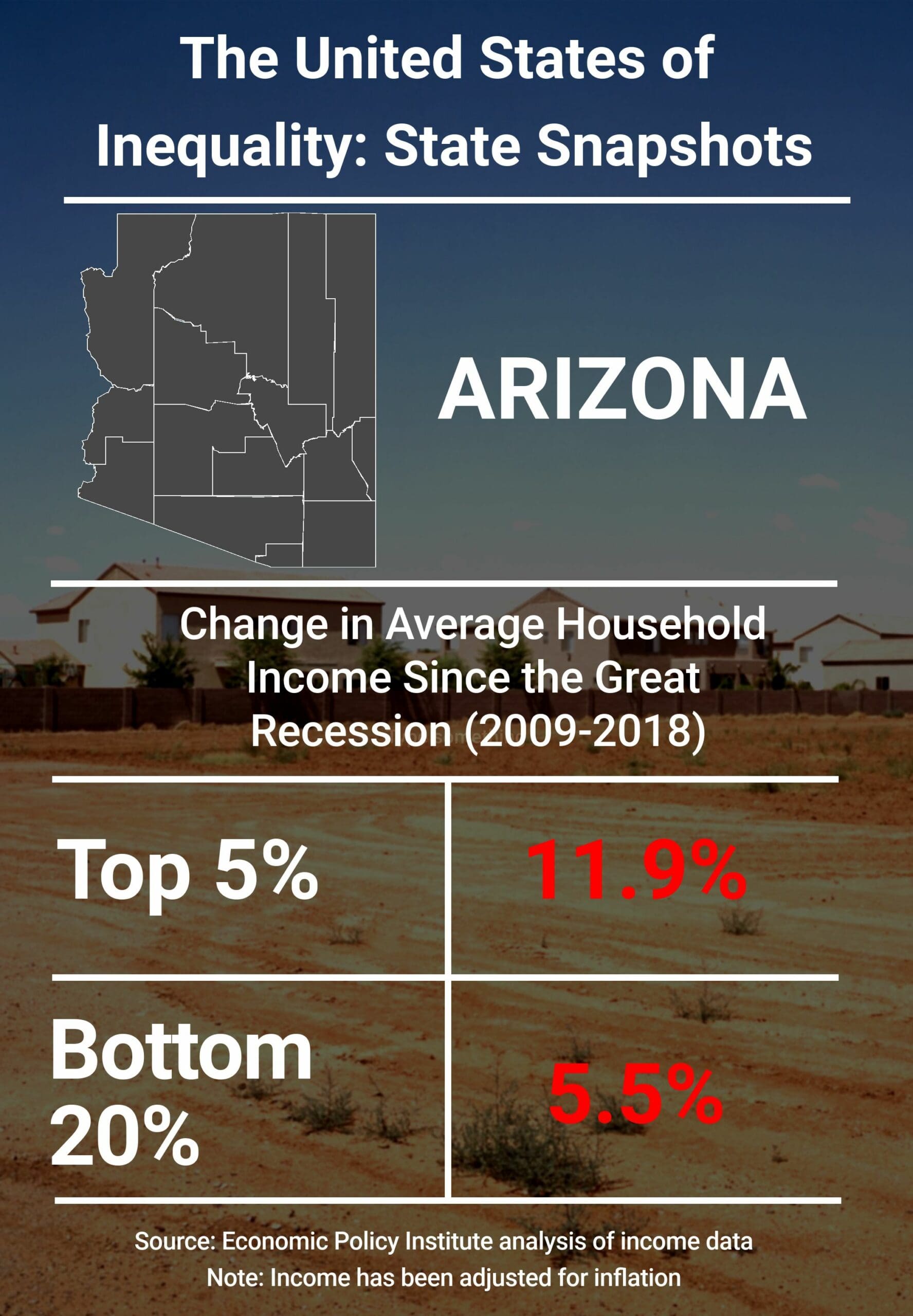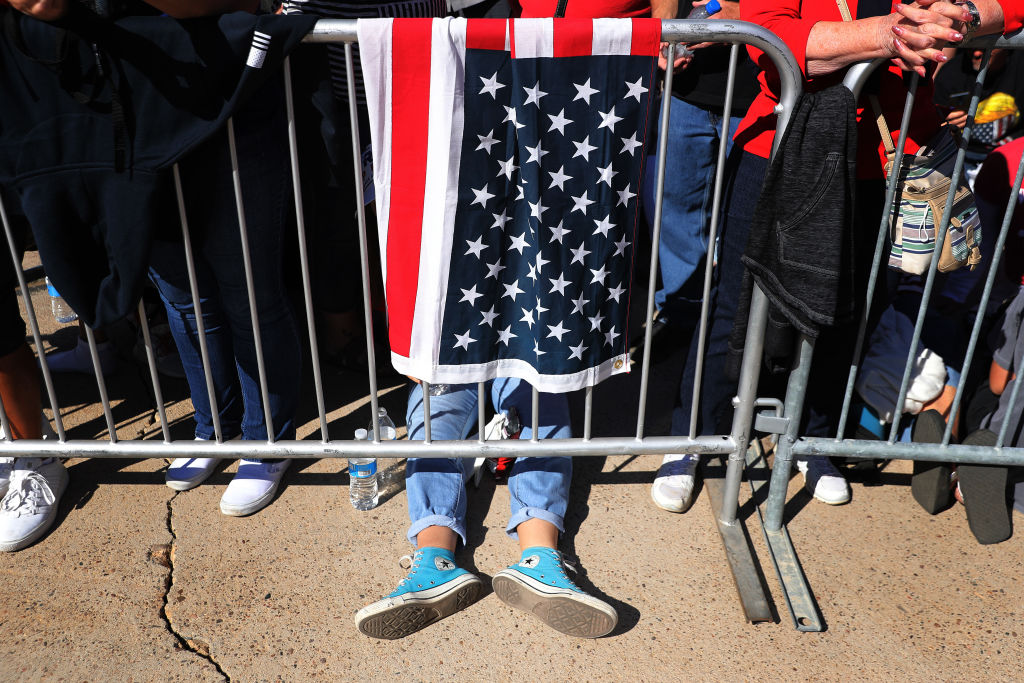Arizona reported its lowest unemployment rate in a decade last December, but troubling signs remain in a state that radically underinvests in education and which produces an overabundance of low wage jobs. As in most states, the gap between the rich and poor is only growing.
The state has attracted tech firms like Intel and NXP in recent years and the well-paying jobs that come with them. But, as The New York Times reports, the bulk of new jobs created in Phoenix, Arizona’s largest city, have been in low wage industries, like hospitality, retail, and health care.
Experts also blame growing inequality on the state’s unwillingness to adequately invest in public education. The state legislature has cut taxes or increased exemptions and credits every year but one since 1990, leaving the state with approximately $5 billion less in revenue than it would have had without a near 30-year streak of cuts.
“As Arizona has slowly fallen behind the national average in educational spending, it’s also fallen behind in educational attainment,” said David Lujan, the director of the Arizona Center for Economic Progress. “We’ve seen wages fall, and I think there’s a direct correlation.”
- As in most states, income inequality here has been on the rise since the Great Recession. Arizona households in the bottom 20 percent only saw their incomes increase by 5.5 percent between 2009 and 2018; meanwhile, the top five percent of households saw their incomes increase by nearly 12 percent.
- The median wage of the four of the most common occupations in the state – administrative, sales, food service, and transportation – is less than $17/hr.
- One in four children in Arizona live in poverty, and the ratio is much higher for kids of color. The ratio increases to 31 percent for African American and Latino kids, and to 45 percent for American Indian children.
- As in the rest of the country, Arizona has large disparities across racial and ethnic groups when it comes to its incarceration rates. Strikingly, 58 percent of people imprisoned for marijuana possession in recent years have been Hispanic, while they make up just 31 percent of the population, according to FWD.us, a nonpartisan criminal justice reform group. Meanwhile, drug use is comparable across racial and ethnic groups in society as a whole. Both law enforcement and elected officials in the state have come under fire for racist policies.
- The state’s affordable housing struggle, while mild compared to neighboring California, is also contributing to growing inequality. Last year, the metro Phoenix area led the nation in rent increases, at 7.4 percent. About 90 percent of apartments built there in the last five years are luxury developments with rents far exceeding what most residents can afford.

Arizonans passed a ballot measure in 2016 to gradually increase the minimum wage to $12 per hour in 2020, pegging it to inflation after that. Dave Wells, of the Grand Canyon Institute, says their research finds this increase has had a significant positive effect on the incomes of workers in food service, in particular, the third most common job in the state. Income growth for the poorest 20 percent of households accelerated in Arizona between 2o16 and 2018, compared to the prior two years, bucking a national trend, according to a recent report in Capital & Main.
Not only are Arizonans without a college degree less likely to move into the middle class, but a less educated and low-skilled workforce means companies that come to Arizona rarely offer higher-wage jobs because they don’t believe Arizona has the workforce to fill them. “When businesses relocate to Arizona, we don’t see corporate headquarters,” Lujan said. “We see call centers or data centers.”
Copyright Capital & Main






